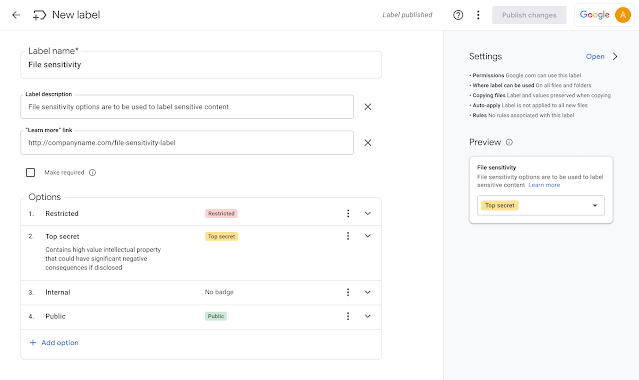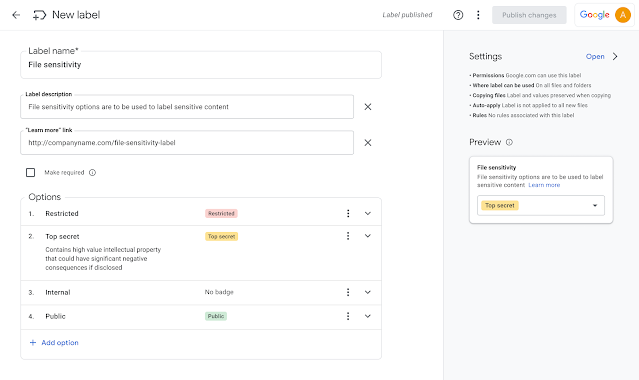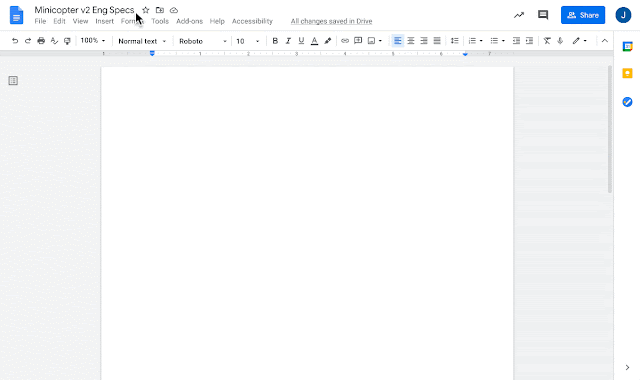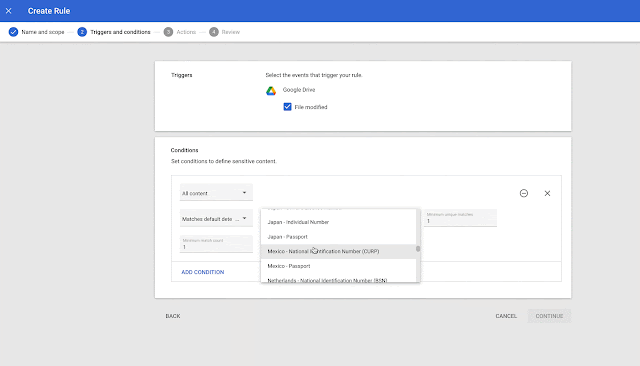What changes do we implement?
We are expanding beta programs for two related features that can help categorize content and improve content protection at scale. Specifically, we will add the following:
- Drive Tags. Rename and update the function Drive Metadata that we previously announced allows administrators to configure custom tags (formerly “metadata”) on a domain and also allows users to apply those tags to Drive files.
- Integration of automated classification and Data loss prevention (DLP) from Drive. Automated classification can help organizations automatically add Drive tags to content based on rules defined by the administrator and predefined content detectors.
- As part of this release, we added 60 new content detectors, including resumes, SEC forms, patents and source code.
- Using automated classification makes it easier to adapt label usage while reducing the risk of manual classification errors.
- With DLP, Both manual and automated labels can be used to prevent some files from being printed, downloaded, or shared externally.
These features are currently available in the beta program. Potential customers can now submit a request to join to the beta program here.
Drive labels will be available to Google Workspace Essentials, Business Standard, Business Plus, Enterprise Essentials, Enterprise Standard, Enterprise Plus, Education Standard, Education Plus, and Nonprofits customers. Automated classification and DLP will be available for Google Workspace Enterprise Standard, Enterprise Plus, and Education Plus customers.
Read our blog post about the announcement for Who is affected by this change?
To administrators and end users Special handling of sensitive data is a fundamental element of an efficient information control policy, and the first step is to label files that may contain sensitive intellectual property, personally identifiable information, data subject to special compliance regulations, and more . Additionally, they help administrators prevent sensitive file sharing, printing, and downloading through integration with data loss prevention (DLP). Administrators can also create tags to indicate department names, document types, file statuses, and any other categories they can think of to make it easier to discover content in advanced search. When used in conjunction with automated classification, Tags in Drive can be added automatically based on DLP rules defined by the administrator and detectors predefined content. Automated classification can help tailor data protection and classification efforts by reducing the administrative burden and potential errors associated with manual labeling. Administrators can define custom tags for their organization Users can add tags to Drive files (if allowed by the administrator) or take advantage of automatic classification Administrators can configure data loss prevention (DLP) rules for files with a specific tag Drive Tags DLP integration and automated classification This article is the translation of the English blog published on June 14.Why use these functions?
How to get started
Throwing rhythm
Availability
Resources






